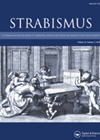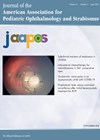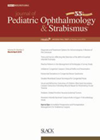
Journal Reviews archive for October 2021
Outcomes of augmented surgery for exotropia
This was a prospective study to assess patients with basic type intermittent exotropia of 15-45PD in angle and who were operated with augmented bilateral lateral rectus recessions with conjunctival recession, and followed postoperatively for six months. The study included 15...
Topical anaesthetic strabismus surgery
This prospective observation study was undertaken with 16 symptomatic diplopia patients (15 male, one female) from various causes. All underwent single stage adjustable strabismus surgery (SSASS) under topical anaesthesia. Mean age was 28.12 years (range 19-65) and all had a...
How a paediatric population presented with diplopia
The authors present the results of a retrospective records review of 244 children presenting with diplopia over a three-year period. The majority of cases presented to paediatric ophthalmology clinic; other routes of presentation included eye casualty, neuro-ophthalmology or another eye...
Positives and negatives of managing diplopia in adults with prisms
This study recruited consecutive patients prescribed prisms during a two-year period, within set criteria of a deviation up to 30 prism diopters, good fusion, willingness to wear prisms and no previous unsuccessful use of prisms. The majority of cases had...
Whiteboard illustrations added to pre-surgery timeout procedure
The authors present results of a quality improvement initiative. A whiteboard illustrated with right and left eyes with views of the extraocular muscles was developed, the board also contained spaces for the patient’s name, deviation, versions and the procedure name....
Effect of observation of intermittent exotropia on health-related quality of life of children and parents
The authors present the analysis of the Intermittent Exotropia Questionnaire (IXTQ) completed by the observation arm of a previously reported randomised controlled trial comparing part-time patching to observation. Children aged >5 years completed the Child IXTQ, and all parents completed...
Impact of surgery for intermittent exotropia on the health-related quality of life of the child and parent
The authors present the analysis of the Intermittent Exotropia Questionnaire (IXTQ) completed by children and a parent in a previously reported randomised controlled trial comparing two surgical procedures. Children aged >5 years completed the Child IXTQ, and all parents completed...
Surgical outcome reporting for exotropic DRS
The authors report the surgical outcomes of patients with exotropic Duane’s retraction syndrome (DRS) in a retrospective study of 73 patients; 67 unilateral cases. Patients had a mean age at surgery of 14.11 years (range 2-33). The left eye was...
Normal reference values for the RETeval device
The purpose of this study was to provide normative data of full-field electroretinography (ERG) responses in the paediatric population using the RETeval device in healthy children with normal retinas. This was a prospective study of 38 eyes of 20 patients...
Outcomes of strabismus surgery for TED
This study investigated the surgical outcome according to the initial postoperative angle of deviation after strabismus surgery in patients with hypotropia and esotropia who had thyroid eye disease (TED). The study included 78 patients with mean age of 53.4 ±9.5...
Fixation target position for increased limbus measurement accuracy with AS-OCT
The authors intended to determine the optimal gaze fixation points for lateral rectus and medial rectus muscle insertions using anterior segment - optical coherence tomography (AS-OCT) compared with intraoperative measurements. They recorded 46 lateral and 36 medial rectus muscles from...
Retinal traction during ERM peeling
This prospective study aimed to quantify the retinal thickening induced by epiretinal membrane (ERM) peeling and to correlate this thickening with postoperative retinal function. Twenty-five patients who required surgery for idiopathic ERM were included in the study. The authors performed...








